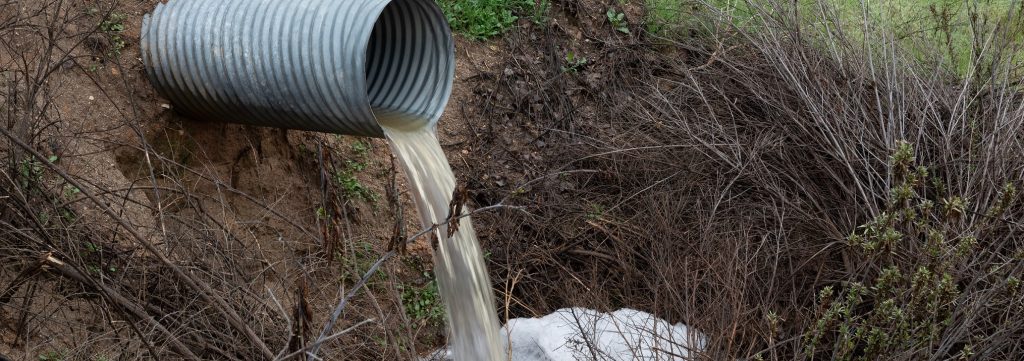
Climate disruption has caused more extreme weather. As we’ve noted before, the impacts of out-of-whack weather systems are making their mark on real estate.
Results of these extremes include intensified stormwater management challenges all over the continent, as unusually heavy storms inundate buildings. Of course, engineers design stormwater systems to handle and redirect the water. These systems, when they work well, head off pollution and flooding. But many areas are finding the need to update their infrastructure.
So, new stormwater fees are taking effect in many U.S. cities and towns. Here’s what we’re watching, in Q&A format so it’s quick and easy to find specific answers.
Where Are These Fees Rolling Out?
Perhaps you’ve heard or read something from your local officials about new stormwater fees in 2023 or 2024. You’re not alone. Here are just a few cities where residents will soon pay new stormwater fees:
- A number of local stormwater fees rolled out in Texas on January 1, 2023. Most buildings will pay something between $1.25 and $3 monthly.
- Seattle, Washington has long charged a drainage fee, but has updated the charges this year. See Seattle’s residential drainage fee schedule here.
Some towns add the extra sums to the owner’s water bill. Others collect separate stormwater charges.
How Do Condo Associations Collect Stormwater Fees?

A condo property could charge each of its unit owners a flat sum — generally a portion of the whole property’s fee. Larger condos might be charged more than smaller condos. Some condo properties charge their unit owners for expenses of fixing and maintaining the storm drainage infrastructure they all depend on.
Buying a condo and wondering whether you’ll wind up paying stormwater fees? Call the management office. The HOA board should be able to give an answer about whether fees exist and how they’re assessed.
(If they don’t exist, just hold on…next year, they might!)
How Do Towns Set Stormwater Fees?
Stormwater fees are typically based on the ratio of hard to permeable surface that a property has. This makes the fees fair, according to the legal history so far.
Impermeable (hard or compacted) surfaces are materials that don’t absorb liquids. These may be roofs, walkways, driveways, overused lands, and sports fields.
Permeable (soft) surfaces naturally handle stormwater runoff. The ground continually filters water through the soil, cleaning the water of toxins. But soil on residential lawns tends to become compacted over the years.
Are There Ways to Get Help Paying Stormwater Fees?
Cities and towns charge the fees so they can pay for what it takes to comply with federal and state environmental laws. Stormwater is a key source of water pollution throughout the United States, and towns have to deal with it. So they are focused on collecting these fees. Homeowners and businesses are never thrilled about fees, though — old or new. Fees add up.
Some townships charge less to people with modest incomes. Local governments have the necessary information and answers on whether storm drainage fees may be waived in case of hardship. In DC, for example, modest-income residents may apply for help with their water bills, including stormwater fees, through the DC Waters SPLASH initiative.
☛ Storm drainage fees might be costly, but house floods are more so. Flood risk is a trending topic in real estate — as is the link between recurring floods and sea-level rise.
Can Residents Challenge Stormwater Fees?
Stormwater fees do meet legal challenges. If they are drafted well, they tend to be upheld.
Let’s briefly look at a few examples. After a railroad company sued, the Fourth Circuit Court of Appeals decided in 2019 to uphold the drainage fee in Roanoke, Virginia. The railroad sued for discrimination because the city wasn’t charging the railroad in the same way it charged homes. The court agreed that there was a valid anti-discrimination law that protects railroads from unfair taxes, and that this charge is a fee — not a tax.
Sorry, railroad company.
A federal judge had already held San Diego’s stormwater fee unconstitutional because it was not proportioned on the volume of runoff from each landowner’s property; Roanoke’s fee was proportional.
Also in 2019, a federal judge upheld the Austin, Texas stormwater fee as constitutional.
Will Stormwater Fees Continue to Grow?
It’s likely. More moisture can build up in a warmer atmosphere. And this makes for heavier rains than we had decades ago. Plus, as we keep uprooting trees and paving land, stormwater systems will continue to be overwhelmed.
☛ Interested in reading more about increased flooding and other tolls taken by climate disruptions? Check out New Risks for Property Owners: Economic and Physical Effects of Climate Change.
In short, sprawl is nothing to sneeze at. The more concrete we pour, the more hard surfaces we’re creating. And these hard surfaces let our runoff overflow the storm drains.
What Can We Do?
We can’t stop the rain from falling, but we do have ways to mitigate the risks. People, their associations, and whole towns can step up by agreeing to work on the following:
- Save trees where possible. Their roots absorb surprising volumes of rainwater!
- Create natural lands and rain gardens. Rain gardens are ground indentations filled with native plants to absorb water; they can reduce runoff as much as 90%!
- Use less water outside. Prefer native plants. Many of them don’t need extra watering.
- Use a rainwater collection barrel for watering a garden.
And when you switch your landscaping out, create permeable surfaces.
What’s All This About Permeable Surfaces?
Rainwater runoff carries grease and chemicals into waterways, degrading streams and rivers and ultimately oceans. To halt runoff, architects now use permeability when they design homes and gardens. More plantings, more green space. More mulch and sand instead of concrete and featureless lawns.
Wherever designers have to allow for hard surfaces around homes, such as walkways and parking areas, they can opt for “permeable paving” technology. It uses paving materials that let water sink into the ground and benefit from natural filtration. Permeable paving traps and filters pollution that otherwise finds its way into local waters. According to the American Society of Landscape Architects, this style of paving effectively filters as much as 80% of all stormwater. Plus, it looks good.
To find more about permeable paving and other materials and methods, check out the list at the end of the American Society of Landscape Architects’ webpage on permeable landscaping materials.
Moving Forward…
Talking about stormwater is important. By digging into the issue, we can all improve our eco literacy. We can make decisions that better manage the stormwater runoff from all buildings, including our homes.
Supporting References and Further Reading
Norfolk Southern Railway Co. v. City of Roanoke, No. 18-1060 (4th Cir. 2019).
The American Society of Landscape Architects (Washington, D.C.), via ASLA.org: Professional Practice; Using Low-Impact Materials – Permeable Surfaces (2022).
Joint Transportation Committee (Washington State): Guide – Stormwater 101.
Deeds.com: Insurers Hike Prices, Pointing to Climate. Investors See New Opportunities (Dec. 5, 2022).
Deeds.com: Can Zoning Boards Be Climate Heroes? (Aug. 17, 2022).
Deeds.com: Adding Climate Data to Real Estate Listings: New Realities for Homeowners? (Sep. 13, 2021).
And as linked.
Photo credits: Joseph Russo and Eberhard Grossgasteiger, via Pexels.
